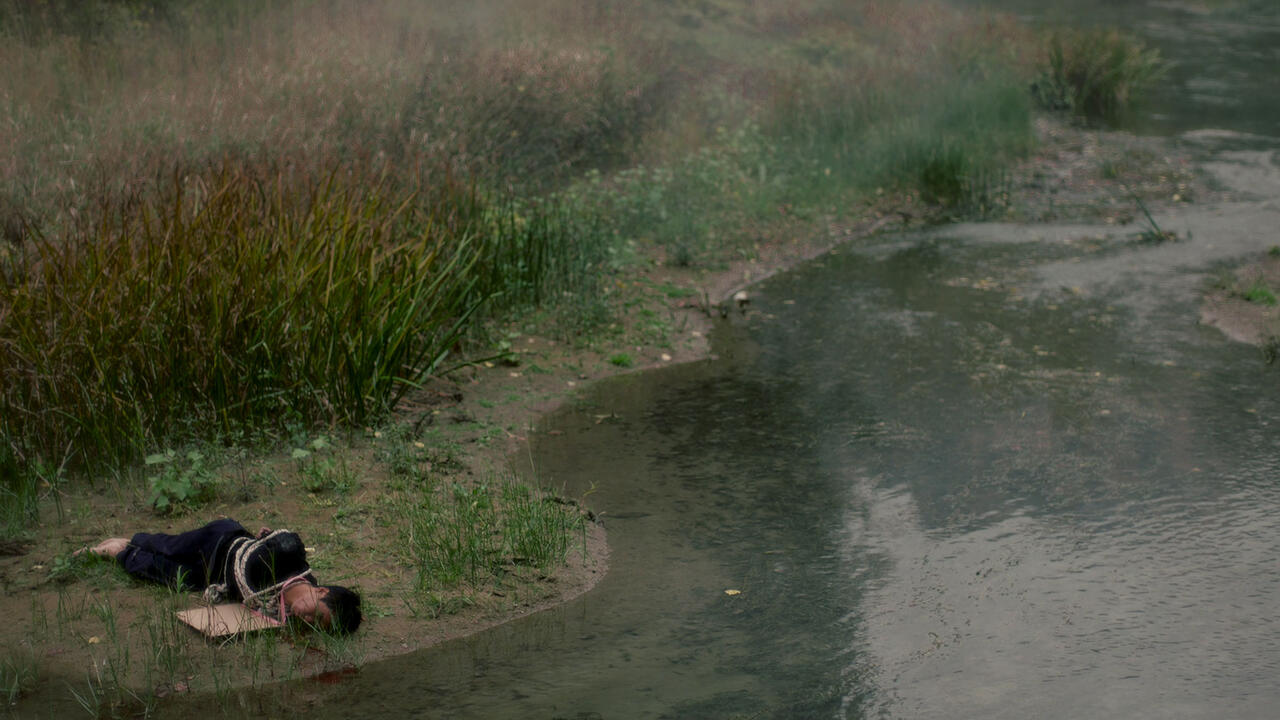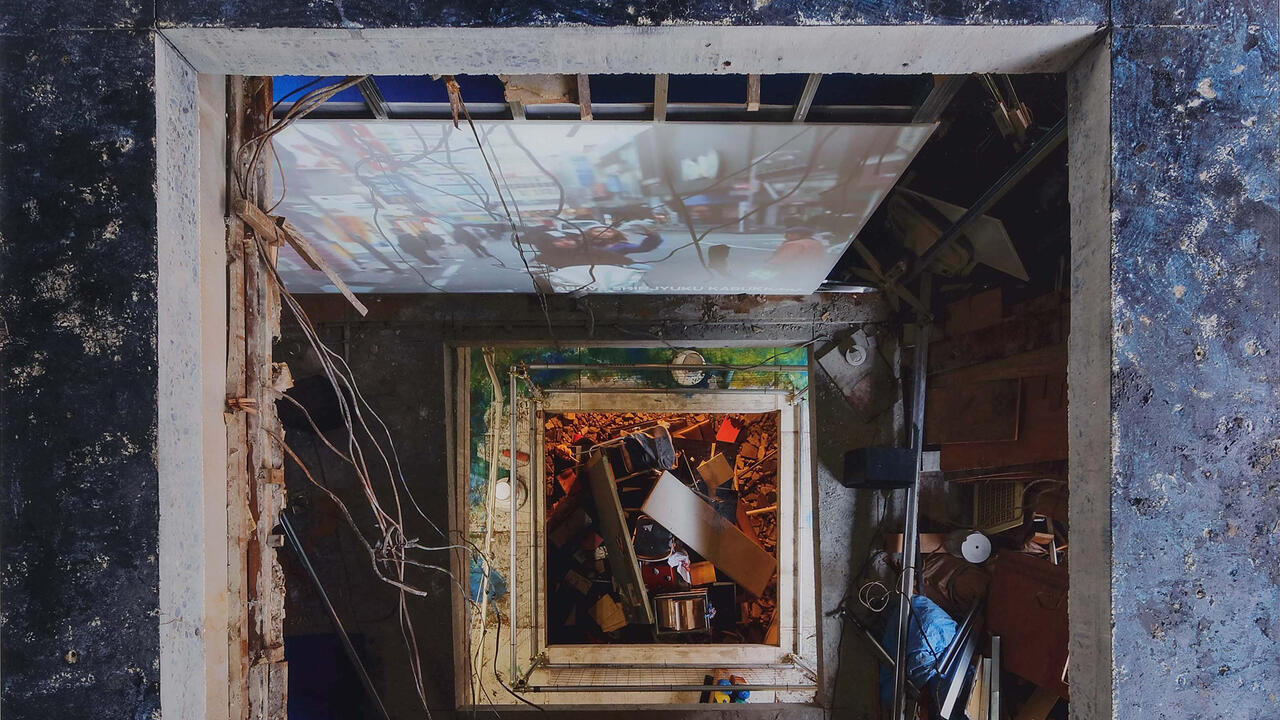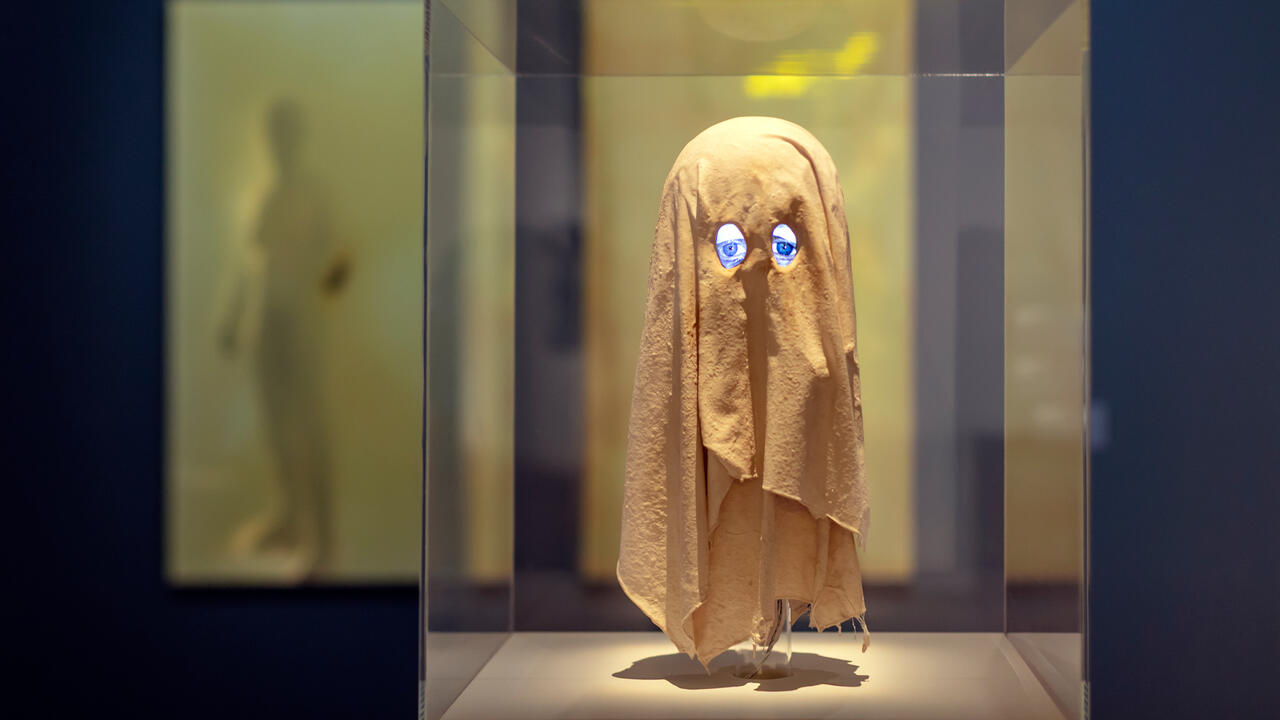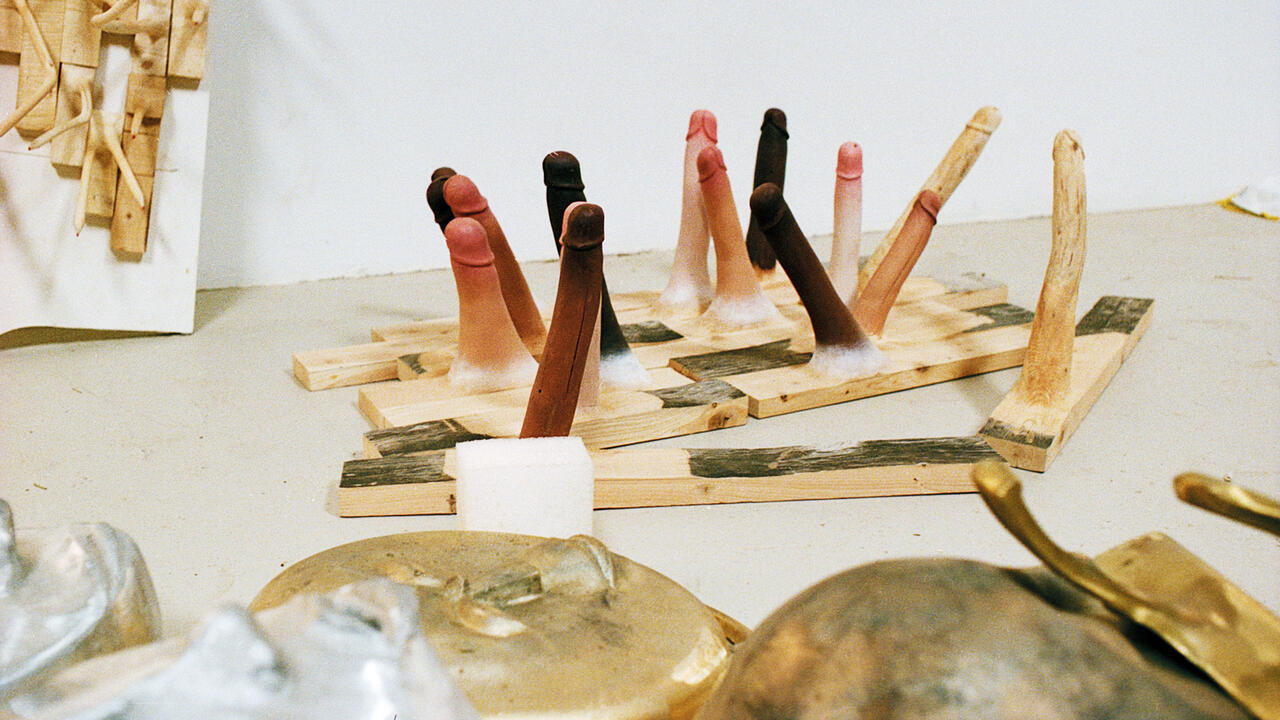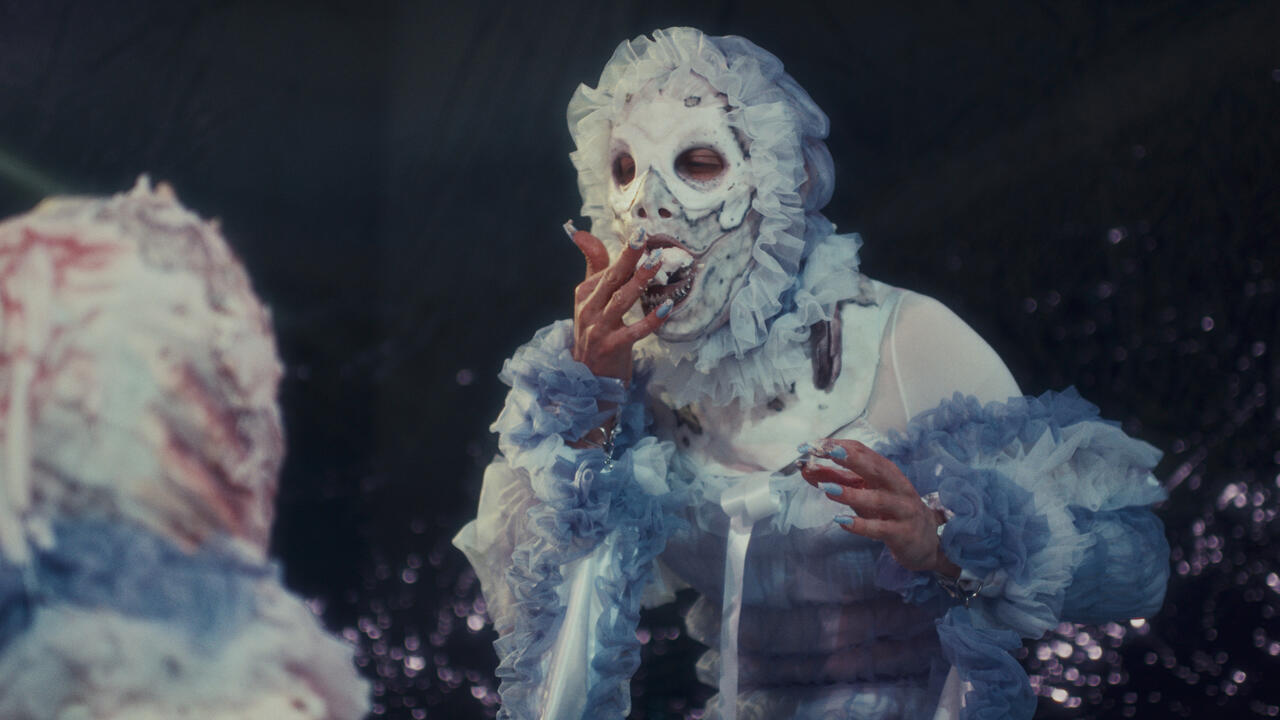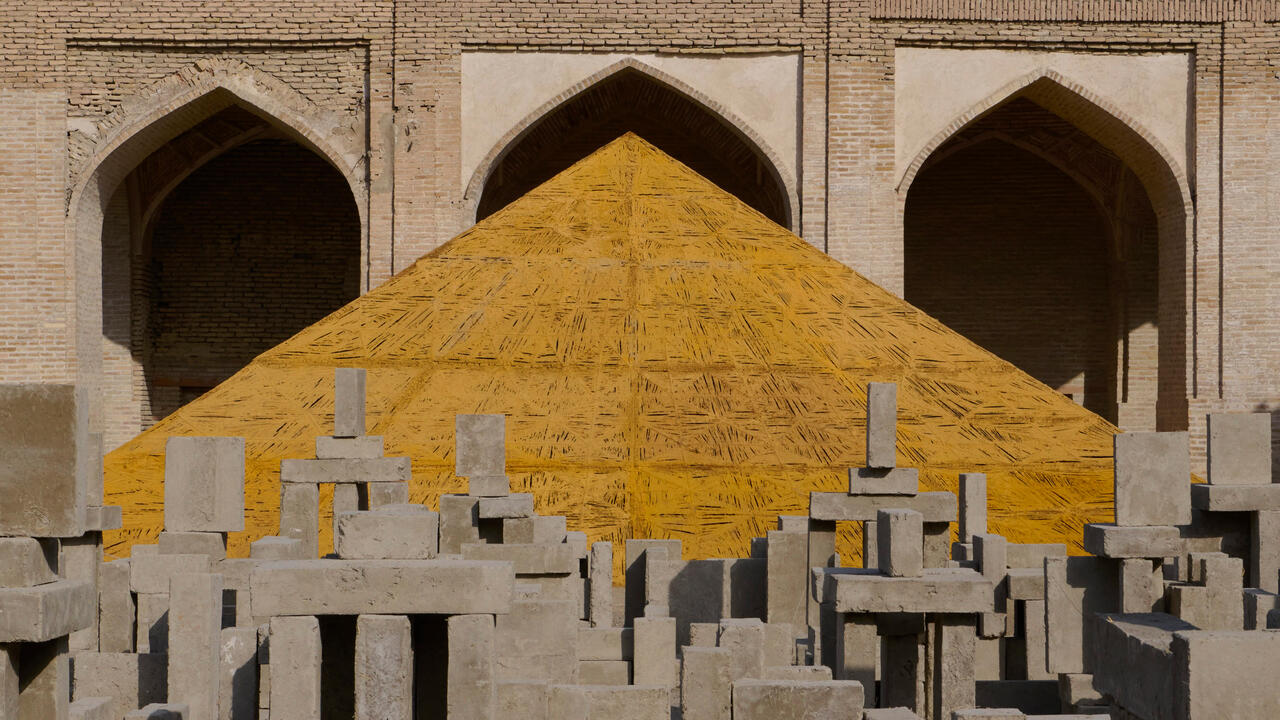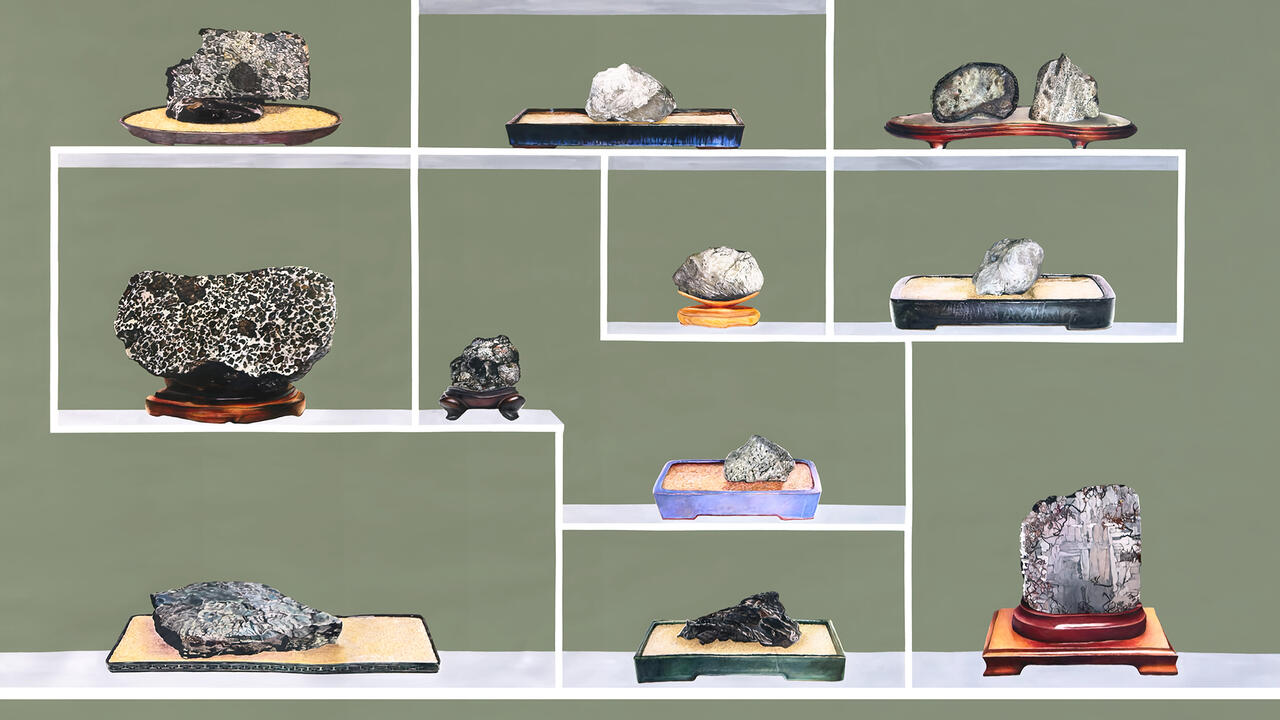Critic's Guide: Shanghai
The highlights of the city’s summer shows
The highlights of the city’s summer shows


Yu Honglei, ‘Swallow Century’
Antenna Space
8 July – 2 September
Yu Honglei’s solo show is an alien arena populated by sculptural figures of fibreglass and acrylic. Part sino-historical, part science-fictional, Yu’s installations are marked by an artificial gloss which speaks to his reputation as one of China’s recent wave of post-internet practitioners. Sculptures standing on mint-green plinths suggest visual quotations welding together folk-mythical symbolism and smooth manufactured forms, rendered in fluorescent blue and green acrylic. Evidently he raids the same store cupboard as his partner, Guan Xiao, who recently had a solo show at London’s ICA. Like the digital images he scavenges, Yu’s sculptures – each standing at around 8 feet – equalize the meaning of these commodified forms even as they exalt their tacky eroticism. Together, they resemble a showroom of futuristic garden furniture. The physical pieces are accompanied by the two-channel video, En Route (2016), a sonically pulsating travelogue which combines speculative sci-fi narratives with Lawrence Weiner’s slick typographical works. Melding enigmatic personal mythologies with the simulacral gloss of digital image production, ‘Swallow Century’ is an glimpse into Yu’s artifactual pantheon.

‘SHE’
Long Museum (West Bund)
23 July – 30 October
Featuring more than 100 major female artists, half of them from China, ‘SHE’ is the city’s blockbuster of the season. Marina, Yoko, Tracey, Louise … All the big names are here, but the most interesting works on show come from homegrown artists who have received far less global attention. The show spans almost a millennium, opening with the graceful calligraphy of Southern Song Dynasty empress Yang Meizi, and Magpies and Plum Blossoms, after Tang Shuya (1889), an ink painting by the Qing Dynasty empress dowager Cixi which explosively vitalizes its ostensibly serene subject matter. More contemporary is Xiao Lu’s Dialogue (1989), a thrillingly noirish installation comprising two telephone boxes occupied by a man and a woman (when first shown the artist famously shot two bullets into the mirrored space between them). With so many canonical feminist artists at its core, what ‘SHE’ has to offer on China’s contemporary gender politics is glibly platitudinous. Perhaps quantity will prove to be a quality of its own – it is, after all, the largest exhibition of women artists that China has ever held.

‘Turning Point: Contemporary Art in China since 2000’
Minsheng Art Museum
23 July – 4 September
Like its modern political formation, Chinese contemporary art has a relatively youthful history, and its generational gaps are clearly felt, delineated by era-defining events such as the cultural revolution and its subsequent free-market expansion. The post-2000 generation comprises artists whose cultural experience is defined by explosive growth and globalization, not least in the art market. Shanghai’s longstanding art-prankster Xu Zhen opens this energetic group show with a work which styles its author as a luxury product line. At 3 metres tall, “Victory” Artworks Set by ‘Xu Zhen (Produced by Madein Company)’ is a mockingly large gift box furnished with an augmented Classical statue, a series of art-historical fitness exercises, and stylish set of swerving PVC tubes painted with vibrant marble gradients. For those who like their art with a little less snark, Turning Point’ features Cheng Ran’s Simply Wild (2014), an oneiric super-8 film based on an amorous spam email, as well as City Light (2000) a funny and poetic short by Cheng’s mentor, Yang Fudong. The final room, filled with smartphones on plinths, features interactive digital works commissioned by Wen Hua Guan (Culture House), all of which are made for Wechat, China’s ubiquitous social media app. As the ‘Chinternet’ comes into its own, this is where the fun begins.
‘The Distant Unknown’
OCT Contemporary Art Terminal (OCAT)
4 June – 28 August
OCAT presents an austere and essayistic show featuring Cornelia Parker, Isaac Julien, Susan Philipsz, Katie Paterson and Ben Rivers. ‘The Distant Unknown’ is curated by Jiang Jiehong of the Birmingham School of Art and is billed as a UK all-stars exhibition. The show plays with the intimate and the interstellar through a collection of rather polished works, with a curatorial precision which feels rare amongst the sprawling surveys this summer. Katie Paterson’s Candle (From Earth into a Black Hole) (2015) is exactly that — a poem in a candle, burning down through layers of the universe. Mars, according to Paterson’s interpretation of molecular analyzes, smells like ‘an old penny’. Meanwhile, Isaac Julien’s Stones Against Diamonds (Ice Cave) (2015) is a pristine multi-screen video installation which forms a worshipful centrepiece in OCAT’s cavernous main space. Borrowing its name from the writings of modernist Brazilian architect Lina Bo Bardi, Julien presents an epic hour-long contemplation of glacial caves in Iceland, drawing together the natural, architectural and psychoanalytical, replete with luxuriant photographic indulgences worthy of any fashion campaign.

Chris Salter, ‘Haptic Field’
Chronus Art Center
9 July – 4 September
In this solo exhibition by Canadian artist and new media researcher, Chris Salter, visitors partake in an immersive experiment in touch. Based around the study of this ‘unhistoricized’ sense, Salter and his collaborators Ian Hattwick and the composer TeZ have turned CAC’s entire exhibition space into a dark, dreamlike laboratory. Participants don a specially designed suit covered in sensors and vibrating actuators, and a translucent visor which almost obscures one’s vision entirely. Entering into Salter’s ambient soundscape, vulnerable and blind, they are guided only by patterns of vibration travelling up and down the suit, and vague glimmers of light in the surrounding installation. As one loses sight of stable spatialization, one wonders whether this is what life was like before the mirror stage — a smelting pot of sensory signals into which indexical visuality dissolves. As the haptic potentials of augmented reality and tangible media leave science fiction for the consumer market, touch — whether natural or virtual in origin — finds itself in newly unchartered philosophical territories. Salter sets the stage for experiential insights into one of our most under-explored senses.

Na Yingyu, ‘The Voyager’s Boat: Wandering the Terrain of History’
META Project Space
30 July – 30 September
A camera from below, possibly mounted on the ground, records a man standing in front of the White House. Dressed in a tall sun hat, a flamboyant shirt and shorts, he blends right in with the tourists around him. He reads aloud in Chinese: ‘1918, US intervened Soviet October in the Far East”. The lines come from a Chinese textbook called World History, which artist Na Yingyu carried with him on a road trip across America aboard a Greyhound bus, successively visiting monuments across the United States marking the historical events recounted in the chapters of his textbook. Mounted on dozens of miniature screens across the gallery, Na’s series of video performances mark his attempt to reconcile historical narrative between official accounts, lived experience and the America of his youthful imagination. Just another Chinese tourist reading America through the voice of World History, Na’s journey is an embodiment of the fact that political narratives — like personal, imagined ones — are very far from stable.

‘Bagism’
K11 Art Space, Shanghai
14 July – 9 October
‘Bagism’ is a exhibition of luxury bags, appropriately held in an underground gallery beneath three floors of shops which sell them. Curators Elizabeth Azoulay and Liu Pinyu define their subject, apparently without irony, as ‘a satellite to the human body [that] enables small objects to be carried in one single object.’ With more than 300 bags on display, this is a clumsy but expansive show with some incredible pieces on display. There is, for example, La Pretiosa de Leonardo, a handbag designed by Da Vinci around 1497, inaugurating the vogue for artist-meets-designer accessories which fill an entire room of the show. While a focused exhibition on the cultural history of the bag would have been welcome, scattered amongst the museum pieces are works of art with a more or less tenuous relationship to the bags themselves. Hu Weiyi presents a striking video installation comprising webcams mounted inside suggestively gaping handbags, while in Pixy Liao’s delicious Homemade Sushi (2010), the artist muses on gender relations by tying her naked Japanese boyfriend up into human sushi. Eyeing up the camera, the boyfriend’s expression suggests that he’d prefer a more heteronormative role.
Main image: ‘Bagism’, 2016, installation view K11 Art Space, Shanghai. Courtesy: © chi K11 art museum, Shanghai, 2016









